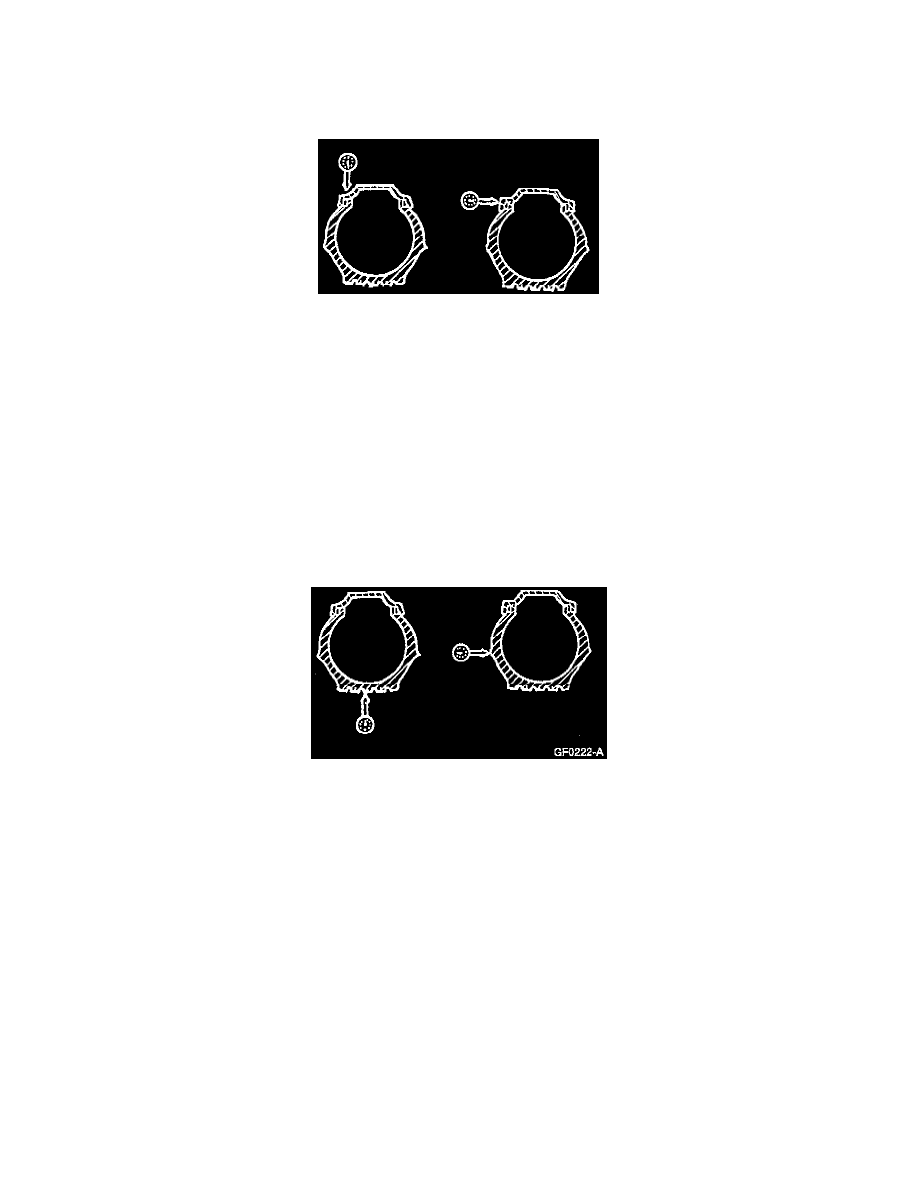Explorer 2WD V6-245 4.0L SOHC VIN E EFI (1997)

Wheels: Component Tests and General Diagnostics
Rim Runout
NOTE: Wheel bolt runout can affect wheel runout. Check the wheel bolt runout before performing this test. See: Wheel Fastener
Wheel Runout
Measure radial and lateral wheel runout at the positions shown. Runout should not exceed 1.14 mm (0.045 in) radial or lateral.
Total Runout
NOTE:
^
Make all measurements on the vehicle with the tires inflated to recommended inflation pressures and with the front wheel bearings adjusted to
specification.
^
If vehicle vibration persists after the wheels have been balanced, it may be caused by either tire or wheel runout. The vibration may also be caused
by damage to the tire tread or sidewall.
Excessive radial and lateral runout of a wheel and tire assembly can cause roughness, vibration, wheel tramp, tire wear, and steering wheel tremor.
Before checking runout, and to avoid false readings caused by temporary flat spots in the tires, check runout only after the vehicle has been driven far
enough to warm the tires.
Tire Runout
Measure the extent of the runout with Radial Runout Gauge. If not within specifications, replace the wheel or tire.
^
Assembly Total Runout (Radial or Lateral): 1.02 mm (0.040 inch)
^
Wheel Runout (Radial or Lateral): 1.14 mm (0.045 inch)
Vibration and Roughness
Vibration, roughness, tramp, shimmy, and thump may be caused by excessive tire or wheel runout, worn or cupped tires, or wheel and tire imbalance.
These conditions may also be caused by rough or undulating road surfaces. Driving the vehicle on different types of road surfaces will indicate whether
or not the road surfaces are actually causing the condition.
Do not immediately suspect the tires when attempting to diagnose a vibration concern. Other sources of vibration include:
^
Loose or worn wheel bearings.
^
Loose or worn suspension or steering components.
^
Brake hub and rotor runout.
^
Loose engine or transmission supports.
^
Engine driven accessories.
Road Test
A tire vibration diagnostic procedure always begins with a road test. The road test and customer interview (if available) will provide much of the
